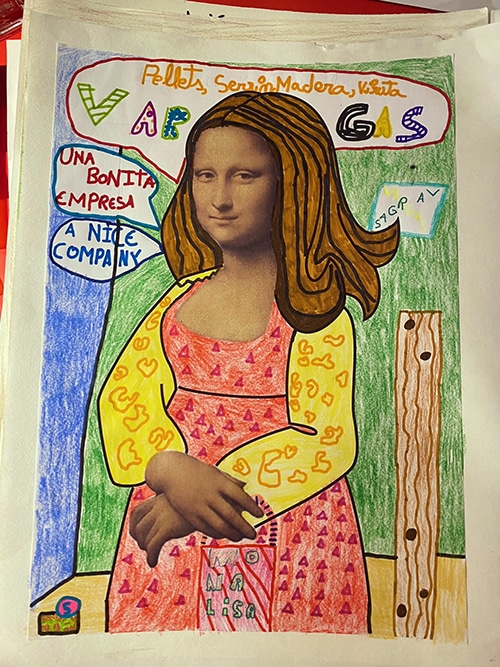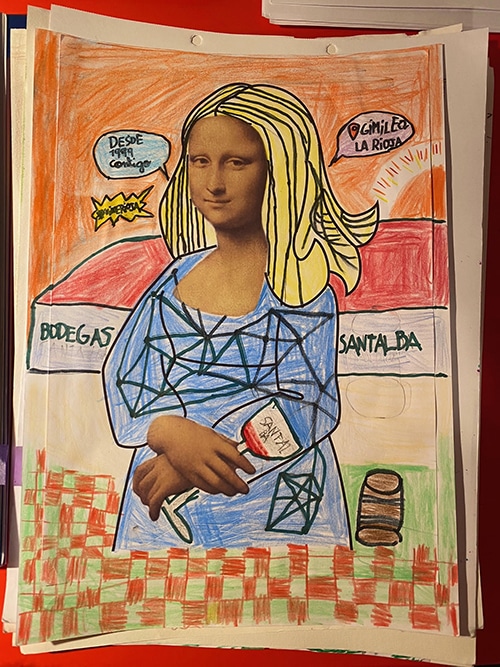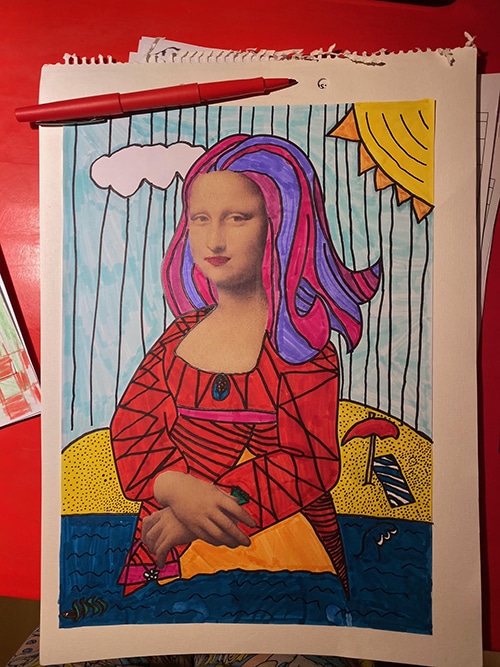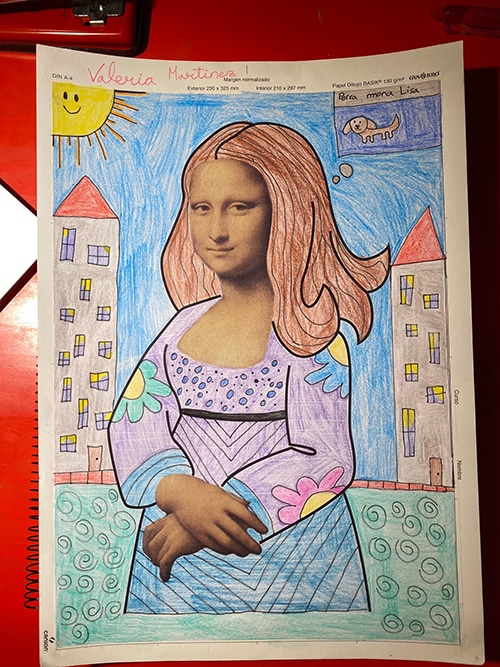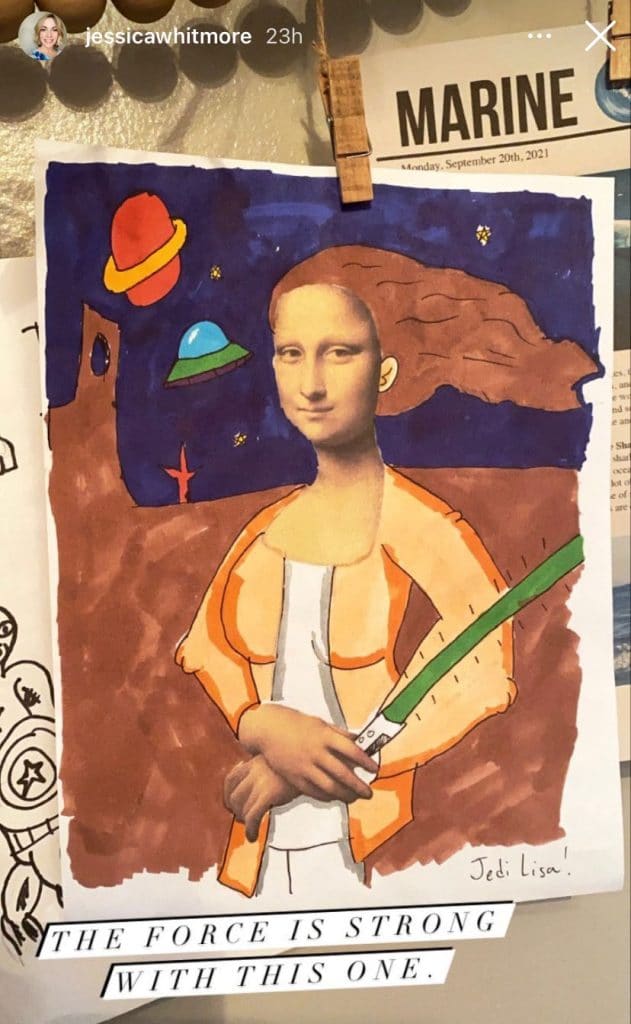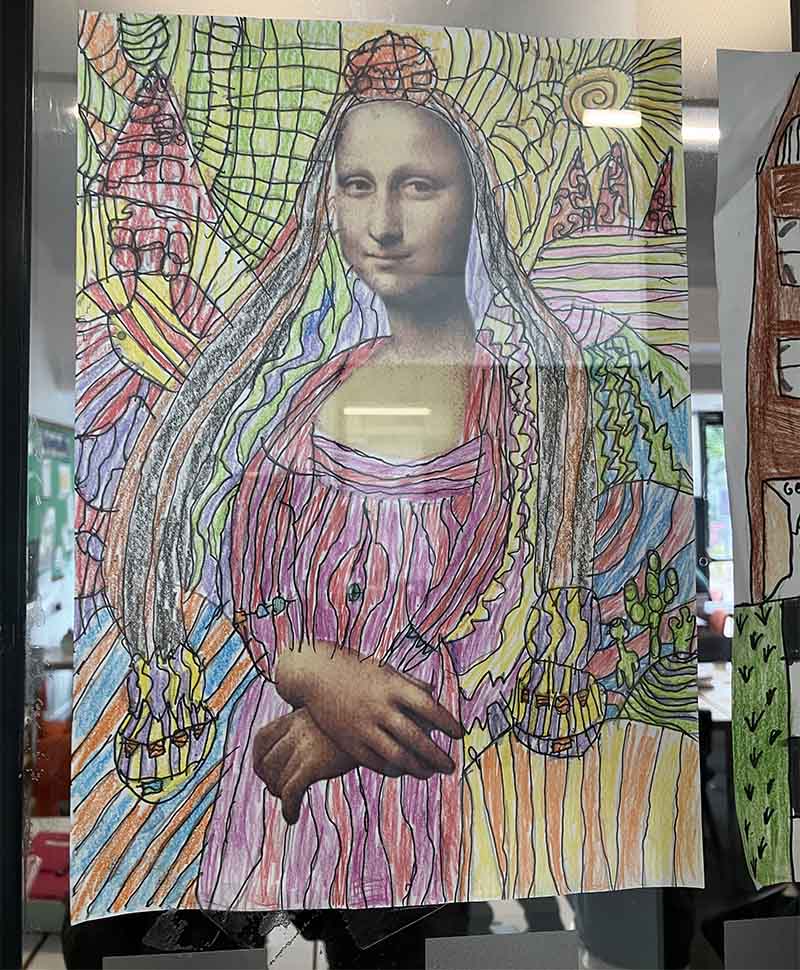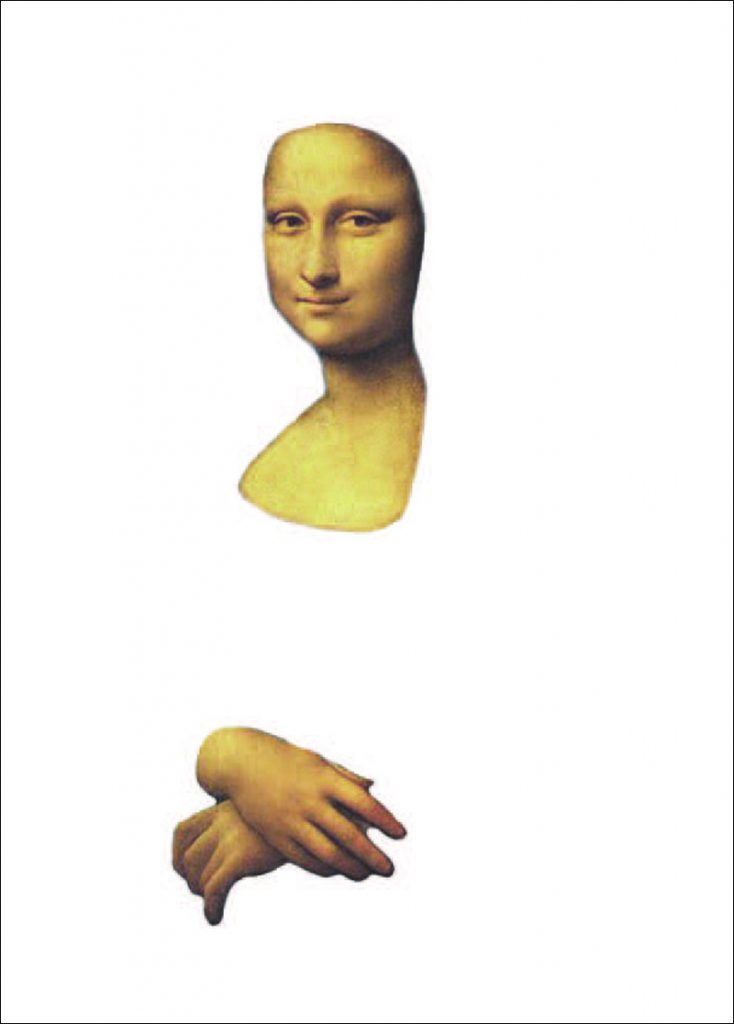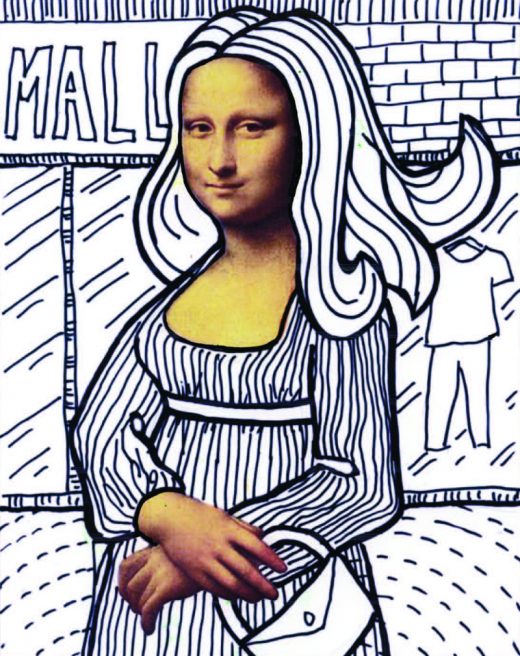Easy Mona Lisa Art Lesson: Having Fun with Patterns
Here’s a fun Mona Lisa art lesson, starting with her very famous face and then filling in your own background with lines, just for contrast.
Mona Lisa Line Art Drawing

A great way to study the power of lines, the beauty of contrast, and the enduring mystery of Mona Lisa, is to make a line art lesson in her honor. Just start with a template, block out a new “Mona”. Then fill it in with lots and lots of lines and patterns.
Cutting and glueing a picture could work for this, but the blend of a color photo and marker lines looks even more interesting if they are on the same sheet of paper. For best results, try to use a heavier marker for the main body shapes, and a very thin one for all the details. The two make it the drawing easier to see and more interesting to look at.
Student Art Inspiration – from Spain

Pin me to your Pinterest Board
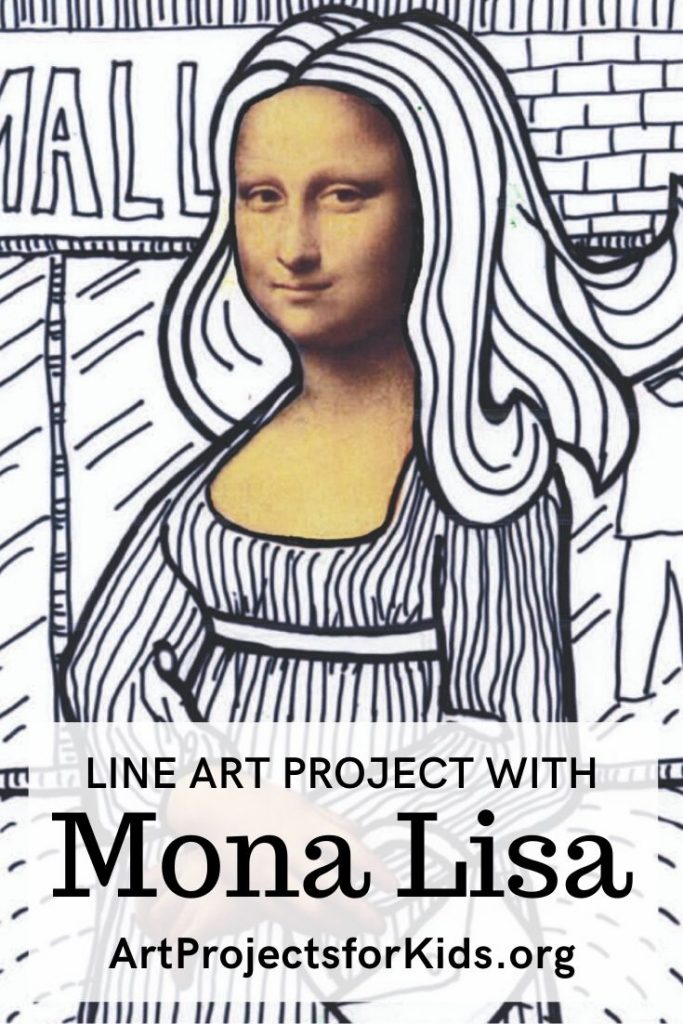
Subscribe to “The Daily Draw” to grab this tutorial and template!
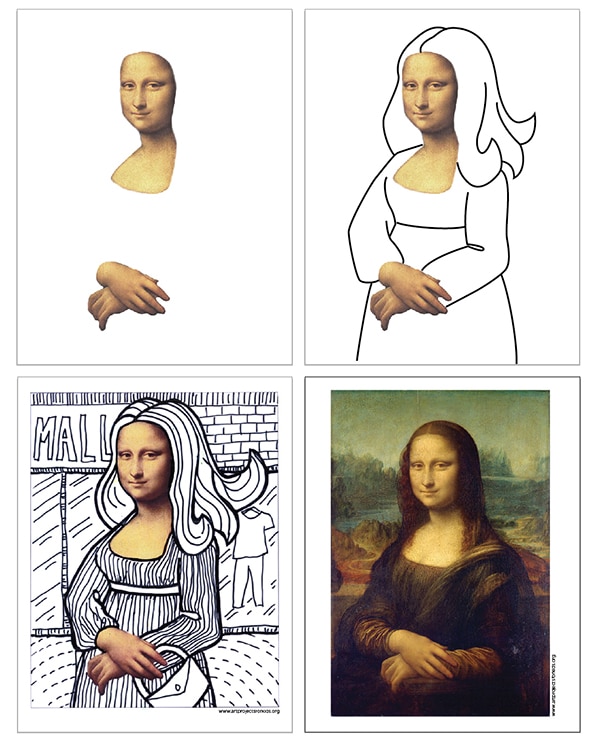
Materials for Mona Lisa Art Project

- Pencil. The Ticonderoga brand are the most reliable, make nice dark lines when you need them, and are the easiest to erase. Buying the pre-sharpened ones will save busy teachers a lot of time.

- Eraser. Large ones you can hold in your hand do a much better job than just the pencil tip erasers, especially when erasing leftover pencil lines after tracing.
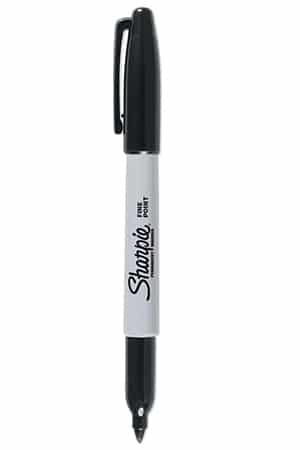
- Black Sharpie Marker. These fine point permanent marker pens make nice black outlines, have a good tip for coloring, and never bleed when they get wet. Use them with good ventilation and add extra paper underneath to protect your tables.
Directions for Mona Lisa Art Project
Time needed: 1 hour
Mona Lisa Art Project Step by Step
- Preview the Mona Lisa painting for reference

- Print the template on drawing paper.

- Sketch and trace the basic outlines with a thick marker.

- Add details with a thin marker, the more the better.


Already subscribed to “The Daily Draw”?
Great, then use the button below to get your free Mona Lisa tutorial.
And thanks for wanting to bring more step-by-step, no-prep art lessons to your classroom!






